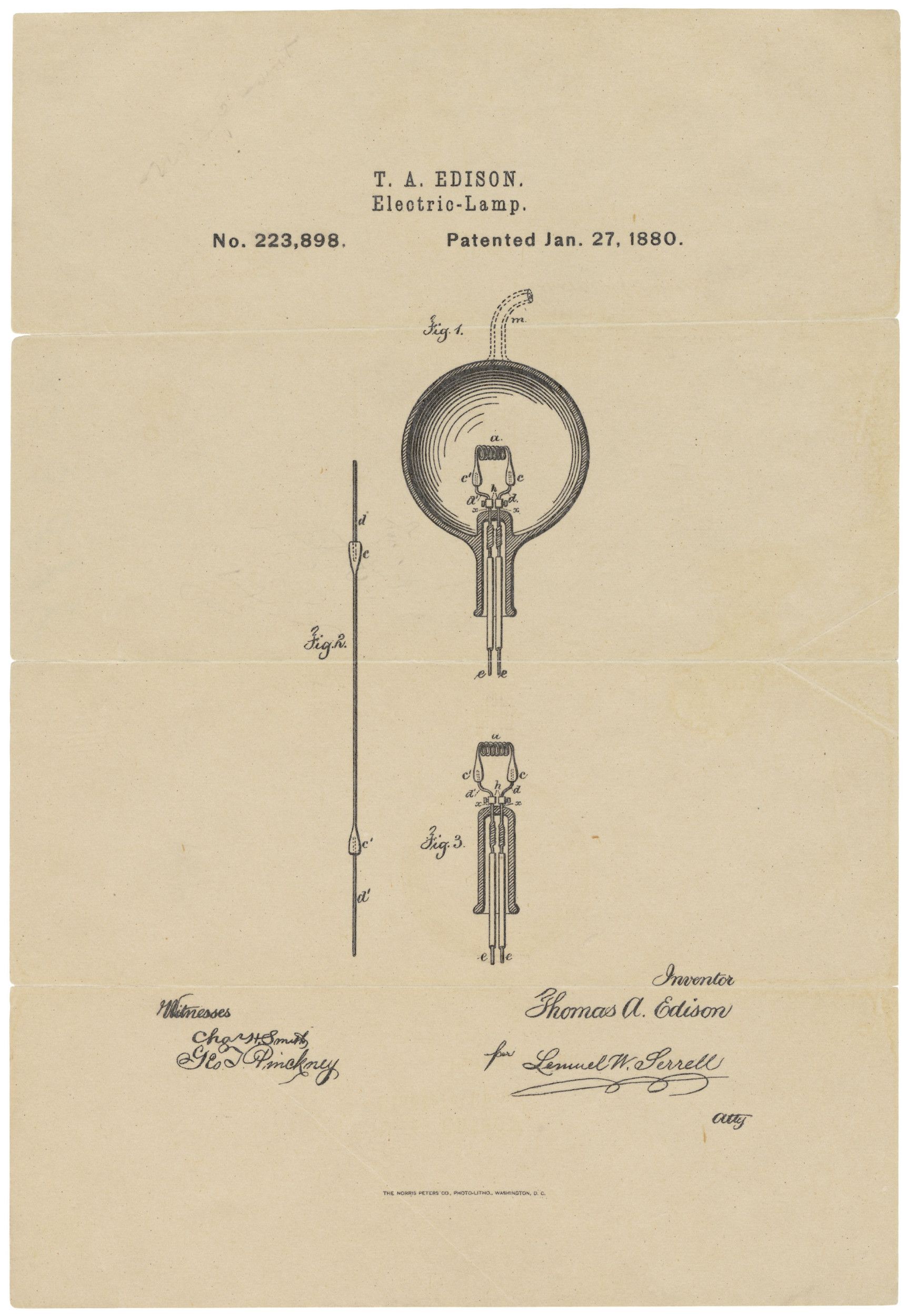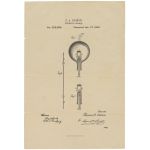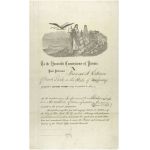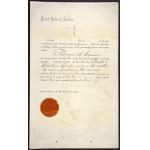Patent Application for the Incandescent Light Bulb
1/27/1880
Add to Favorites:
Add all page(s) of this document to activity:

Add only page 1 to activity:
Add only page 2 to activity:
Add only page 3 to activity:
The Patent Office granted Thomas Edison a patent for his "electric-lamp." Edison's patent was an improvement on electric lamps, not the invention of them; but because of Edison’s design changes and the materials he used—such as a carbon filament—his patent allowed for an electric lamp that was reliable, safe, and practical. It paved the way for the universal domestic use of electric light.
Thomas Edison propelled the United States out of the gaslight era and into the electric age. From the time he was a boy, he was mesmerized by the mechanics of the universe and, with virtually no formal education, brought forth innovations that continue to dominate our lives. Out of his New Jersey laboratories, which were themselves inventions—thoroughly equipped and fully staffed—came 1,093 patented inventions and innovations that made Edison one of the most prolific inventors of all time.
Three of his most famous inventions, the phonograph, a practical incandescent light bulb, and the moving picture camera, dazzled the public and revolutionized the way people live throughout the world. His thundering dynamos transformed the United States into the world’s greatest industrial superpower.
In 1878 the creation of a practical long-burning electric light had eluded scientists for decades. With dreams of lighting up entire cites, Edison lined up financial backing, assembled a group of brilliant scientists and technicians, and applied his genius to the challenge of creating an effective and affordable electric lamp. With unflagging determination, Edison and his team tried out thousands of theories, convinced that every failure brought them one step closer to success.
On January 27, 1880, Edison received the historic patent embodying the principles of his incandescent lamp that paved the way for the universal domestic use of electric light. The patent number for his electric lamp is 223,898.
This document was featured in "Teaching with Documents: OurDocuments.gov" in the November/December 2002 National Council for the Social Studies (NCSS) publication Social Education.
Thomas Edison propelled the United States out of the gaslight era and into the electric age. From the time he was a boy, he was mesmerized by the mechanics of the universe and, with virtually no formal education, brought forth innovations that continue to dominate our lives. Out of his New Jersey laboratories, which were themselves inventions—thoroughly equipped and fully staffed—came 1,093 patented inventions and innovations that made Edison one of the most prolific inventors of all time.
Three of his most famous inventions, the phonograph, a practical incandescent light bulb, and the moving picture camera, dazzled the public and revolutionized the way people live throughout the world. His thundering dynamos transformed the United States into the world’s greatest industrial superpower.
In 1878 the creation of a practical long-burning electric light had eluded scientists for decades. With dreams of lighting up entire cites, Edison lined up financial backing, assembled a group of brilliant scientists and technicians, and applied his genius to the challenge of creating an effective and affordable electric lamp. With unflagging determination, Edison and his team tried out thousands of theories, convinced that every failure brought them one step closer to success.
On January 27, 1880, Edison received the historic patent embodying the principles of his incandescent lamp that paved the way for the universal domestic use of electric light. The patent number for his electric lamp is 223,898.
This document was featured in "Teaching with Documents: OurDocuments.gov" in the November/December 2002 National Council for the Social Studies (NCSS) publication Social Education.
Transcript
To the Honorable Commissioner of Patents:Your Petitioner Thomas A. Edison of Menlo Park in the State of New Jersey prays that Letters Patent may be granted to him for the invention of an Improvement in Electric Lamps and in the method of manufacturing the same set forth in the annexed specification. (Case no. 186).
And further prays that you will recognize Lemuel W. Serrell, of the City of New York, N.Y., as his Attorney, with full power of substitution and revocation, to prosecute this application, to make alterations and amendments therein, to receive the Patent, and to transact all business in the Patent Office connected Therewith.
1879
This primary source comes from the Records of the Patent and Trademark Office.
National Archives Identifier: 595450
Full Citation: Drawing for an Electric Lamp; 1/27/1880; Patents Issued to Thomas A. Edison, 1868 - 1911; Records of the Patent and Trademark Office, Record Group 241; National Archives at College Park, College Park, MD. [Online Version, https://www.docsteach.org/documents/document/patent-application-incandescent-light-bulb, April 19, 2024]Activities that use this document
- Patent Analysis: Thomas Edison's Lightbulb
Created by the National Archives Education Team
Rights: Public Domain, Free of Known Copyright Restrictions. Learn more on our privacy and legal page.






